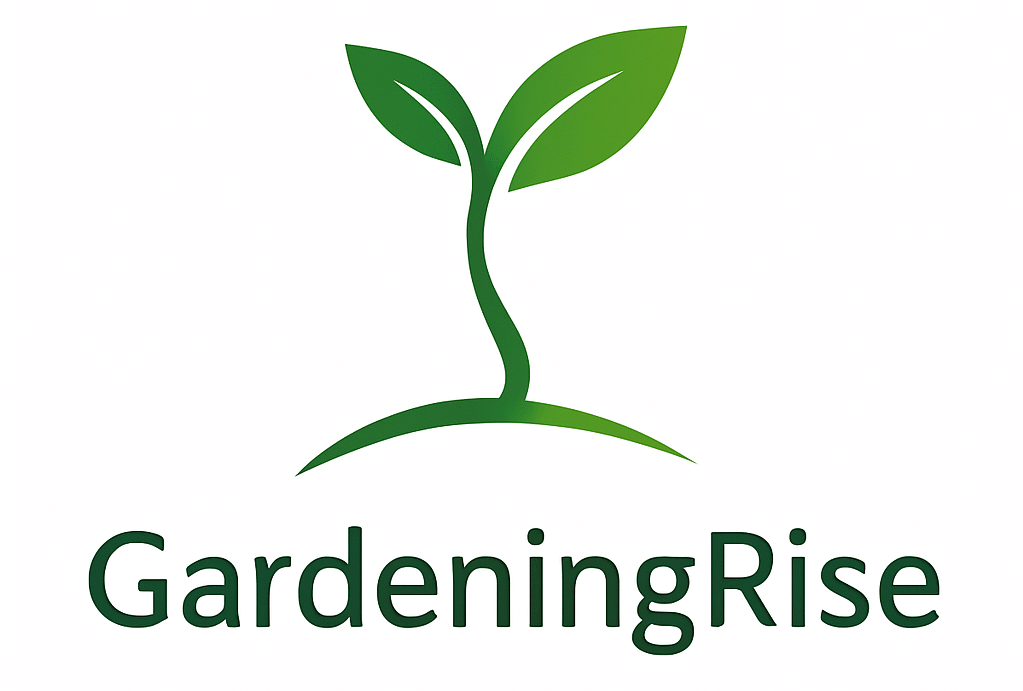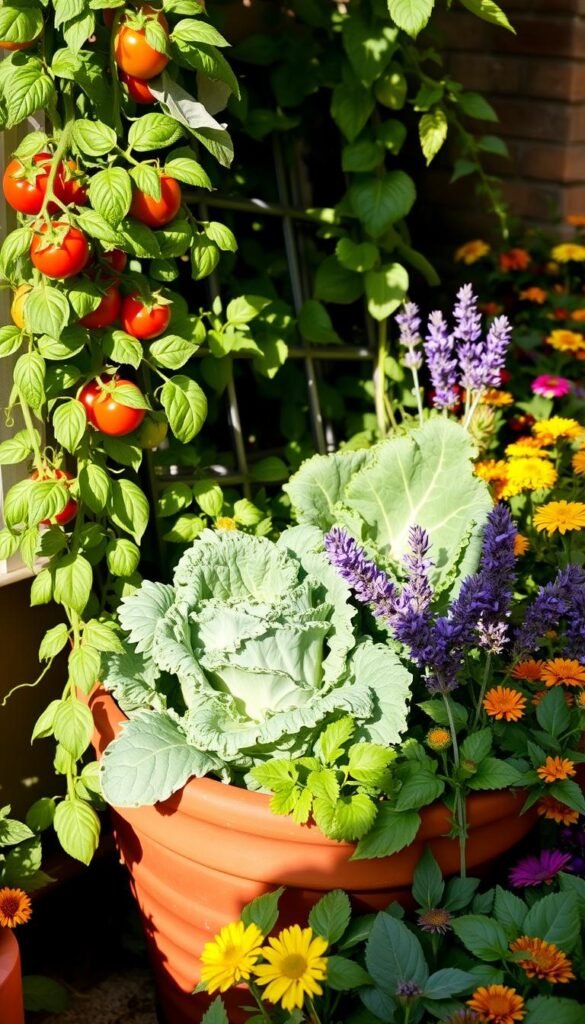Growing vegetables and herbs in pots isn’t just about saving space—it’s a smart way to create a thriving mini-ecosystem. By pairing specific species, you can naturally improve soil health, deter pests, and even amplify flavors. Whether you’re working with a sunny balcony or a compact patio, this method turns limited areas into productive green zones.
Why does this approach work so well? Plants like basil and tomatoes, for example, support each other’s growth while repelling unwanted insects. Herbs such as thyme or oregano also thrive when grouped with veggies, creating a mutually beneficial environment. These partnerships reduce the need for chemical sprays and let you harvest fresher, tastier produce.
For those new to this strategy, successful pairings like basil and tomatoes offer an easy starting point. You’ll learn how to match sun needs, water preferences, and root depths to avoid competition. Even better, this method is budget-friendly and adaptable, making it perfect for urban gardeners or anyone with limited outdoor space.
Key Takeaways
- Pairing compatible species maximizes space and resources in small gardens.
- Certain combinations naturally repel pests without chemicals.
- Shared nutrients lead to healthier, more flavorful harvests.
- Always group plants with similar light and water requirements.
- Herbs like basil enhance both growth and taste in nearby veggies.
Understanding Companion Planting Principles
Ever wonder why some potted greens flourish while others struggle? It’s all about strategic friendships between species. This method lets you grow healthier crops by pairing plants that naturally help each other thrive—even in tight spaces.
What Makes Container Pairings Work?
Think of your garden as a team where each member plays a specific role. For example, basil releases oils that repel aphids from nearby tomatoes, while tomatoes provide shade for basil’s roots. This synergy means fewer pests and better-tasting harvests.

“Grouping the right species turns your pots into self-sustaining ecosystems. You’ll spend less time fixing problems and more time enjoying results.”
Nature’s Two-for-One Deal
Smart pairings tackle two big challenges at once:
| Benefit | Example | Result |
|---|---|---|
| Nutrient Sharing | Beans + Peppers | Beans add nitrogen to soil |
| Pest Control | Marigolds + Squash | Marigolds deter beetles |
Herbs like rosemary or mint also mask scents that attract bugs. This means you can skip harsh sprays and still protect your plants. Plus, roots from different species occupy separate soil layers, preventing competition for water.
Ready to experiment? Start with proven duos like tomatoes and basil, then track how they support each other. You’ll see why this approach works so well in small-scale gardens!
Benefits of Container Gardening with Companion Plants
Urban gardeners are discovering how pairing the right species transforms cramped spaces into lush, productive hubs. Social media trends on Pinterest and Facebook show how creative combinations—like lettuce thriving beside tomatoes—turn balconies into edible jungles.

Why Mixing Greens Pays Off
Imagine harvesting salad fixings and pasta toppings from one pot. Pairing leafy lettuce with vertical-growing tomatoes uses every inch of soil. Herbs like basil or parsley fill gaps between veggies, adding fresh flavors to meals while deterring pests naturally.
Chives are secret weapons here. Their pungent scent confuses insects that target delicate greens. One gardener shared on Facebook:
“My lettuce stays crisp all season since I added chives—no more aphid battles!”
This approach isn’t just practical—it’s pretty. Bright cherry tomatoes dangling above frilly lettuce create eye-catching displays. You’ll also:
- Maximize harvests by growing 3-4 crops in one box
- Reduce waste with ready-to-pick meal ingredients
- Strengthen plants through natural pest barriers
For those short on space, this method offers a smart way to enjoy diverse flavors. Start with simple trios like spinach, arugula, and thyme. Soon, you’ll see why mixing greens beats single-plant pots every time.
How to Choose the Right Companion Plants for Your Container Garden
Picking plant partners for your pots is like matchmaking for your greens. Success depends on three key factors: matching needs, balancing sizes, and understanding relationships. Get these right, and your garden becomes a self-supporting team.

Matching Water, Sunlight, and Soil Needs
Start by grouping plants that crave similar conditions. Carrots and onions thrive in loose, sandy soil, while cucumbers need richer mixes. Check tags for phrases like “full sun” or “moderate watering” to avoid mismatches.
| Plant Pair | Sun Needs | Soil Type |
|---|---|---|
| Carrots + Onions | 6-8 hours | Well-drained |
| Cucumbers + Garlic | 6+ hours | Nutrient-rich |
| Tomatoes + Basil | 8+ hours | Moist |
Assessing Growth Rates and Plant Sizes
Fast growers like radishes can shade slower starters. Pair them with taller crops that take longer to mature. For example, plant quick-sprouting lettuce around young tomato seedlings. This way, you harvest greens before tomatoes need the space.
Researching Plants’ Interactions and Compatibility
Some plants are natural allies. Garlic protects cucumbers from beetles, while onions deter carrot flies. Check university extension websites for science-backed pairings. One gardener shared:
“After adding garlic to my cucumber pot, I stopped finding holes in the leaves!”
Test combinations in small containers first. Track which duos thrive and which compete. With smart planning, your potted garden becomes a flavorful, pest-resistant paradise.
Companion Planting in Containers: Boost Growth and Flavor Techniques
Starting your first container garden? Don’t stress—this simple roadmap helps you pair plants like a pro. Social media success stories prove even new gardeners can create thriving pots packed with flavor and color.

Step-by-Step Guide for Beginners
1. Pick your base crops: Choose fast-growing veggies like radishes or beets. These anchor your container and mature quickly, giving you early harvests. Pair them with slower growers like carrots to maximize space.
2. Add insect allies: Tuck flowers like marigolds or nasturtiums between vegetables. Their bright blooms attract pollinators while repelling pests. One Reddit user noted:
“My radish crop doubled after adding marigolds—they kept beetles away!”
| Vegetable | Flower Partner | Benefit |
|---|---|---|
| Radishes | Marigolds | Deter root maggots |
| Beets | Nasturtiums | Repel aphids |
| Carrots | Calendula | Attract ladybugs |
3. Layer heights and roots: Plant shallow-rooted greens like spinach above deeper-rooted beets. This lets each crop access nutrients without competing. Leave 3-4 inches between plants for airflow.
4. Feed strategically: Use organic fertilizer when planting. Herbs like basil release nutrients as they grow, reducing the need for extra feeding. Harvest leafy greens often to encourage new growth.
Follow these steps, and you’ll turn limited space into a lush, productive garden. Your balcony or patio will burst with fresh flavors—no backyard required!
Successful Pairings: Vegetables, Herbs, and Flowers
Transform your pots into flavor powerhouses by combining plants that work together like culinary teammates. Strategic matches create vibrant displays while solving common gardening challenges naturally.

Classic Duos That Deliver Results
Tomatoes and basil aren’t just pizza toppings—they’re garden partners. Basil’s scent confuses pests targeting tomatoes, while tomatoes provide afternoon shade. Studies show this pair increases fruit sweetness by up to 20%.
| Pair | Benefit | Harvest Bonus |
|---|---|---|
| Bell Pepper + Basil | Improves pollination | Thicker pepper walls |
| Carrots + Dill | Deters carrot flies | Enhanced earthy flavor |
Space-Saving Trios for Small Pots
Mix leafy greens like lettuce, spinach, and arugula in shallow containers. Their roots grow at different depths, letting you pack more into tight spaces. One urban gardener shared:
“My salad box produces twice as much since I stopped separating these greens—they actually thrive together!”
Add dill near cucumbers or squash. Its feathery leaves attract beneficial insects while improving vegetable growth rates. For vertical interest, train nasturtiums up tomato cages—their flowers deter aphids and add peppery zing to dishes.
Experiment with these proven teams, then create your own. You’ll discover how smart pairings turn ordinary pots into extraordinary edible displays.
Notable Mistakes to Avoid in Container Companion Planting
Mistakes in container gardening can undo your hard work faster than you’d expect. While pairing plants offers big rewards, a few missteps might leave your greens struggling. Let’s explore how to sidestep common errors that trip up even seasoned growers.
Overcrowding and Incompatible Pairings
Stuffing too many plants into one pot creates trouble. For example, pairing oregano with thirsty crops like cucumbers spells disaster. Oregano thrives in drier soil, while cucumbers demand constant moisture. This mismatch stresses both plants, inviting pests like spider mites.
| Mistake | Better Choice | Reason |
|---|---|---|
| Oregano + Cucumbers | Oregano + Thyme | Shared water needs |
| Lettuce + Tomatoes | Lettuce + Radishes | Matching growth speed |
EarthBox® research shows overcrowded containers use nutrients 40% faster. This forces plants to compete, weakening their defenses against insects. Stick to 3-4 plants per 12-inch pot for healthy roots.
Understanding Timing and Growth Patterns
Planting fast-growing greens with slow starters like carrots causes shade wars. Spinach bolts quickly, blocking sunlight young carrots need. One gardener learned the hard way:
“My carrot harvest halved until I stopped planting spinach in the same box!”
Sync your planting schedule. Start cool-weather crops like kale early, then add heat-lovers like basil once temperatures rise. This prevents nutrient battles and keeps insects from exploiting stressed plants. Check seed packets for maturity dates—differences over 30 days often cause problems.
Regional Container Gardening: Creating a Themed EarthBox Garden
Themed gardens let you travel the world through your taste buds, right from your balcony. EarthBox® guides reveal how to craft region-specific pots bursting with authentic flavors. Whether you crave Mediterranean sunshine or Caribbean spice, strategic pairings bring global cuisine to your doorstep.
Mediterranean and Caribbean Container Ideas
Mix sun-loving tomatoes with oregano and garlic for Greek-inspired pots. Garlic protects tomatoes from aphids, while oregano improves their flavor. Caribbean combos shine with hot peppers, bush beans, and cilantro—a trio that thrives in heat and humidity.
| Region | Key Plants | Flavor Boost |
|---|---|---|
| Mediterranean | Tomato + Onion + Oregano | Enhances umami notes |
| Caribbean | Pepper + Bean + Cilantro | Adds citrusy heat |
Eastern European and Scandinavian Flavor Combinations
Cool-weather crops like dill and cabbage thrive together. Pair onions with beets for borscht-ready ingredients. Scandinavian thyme elevates root vegetables—try it with carrots and parsley for Nordic stew starters.
Asian and Middle-Eastern Inspired Gardens
Grow Thai basil beside chili peppers for explosive Southeast Asian flavors. Middle Eastern mint protects eggplant from pests while adding freshness to dishes. One gardener shared:
“My shakshuka tastes authentic since I started growing peppers and cumin together!”
These combinations let you harvest meal-ready ingredients while celebrating cultural traditions. Your pots become edible postcards from across the globe.
Integrating Science and Practical Experience in Container Companion Planting
Modern gardeners blend lab-tested strategies with dirt-under-the-nails experience for optimal results. By pairing research with real-world testing, you’ll create pots that thrive biologically while delivering bumper harvests. Let’s explore how data and daily observation work together.
Evidence-Based Tips and Garden Planner Tools
Start with digital tools like garden planners that suggest proven plant teams. These apps analyze factors like root depth and nutrient needs, helping you pair brussels sprouts with shallow-rooted leafy greens. Studies show this combo improves yields by 15-20% compared to solo planting.
| Science-Backed Pair | Benefit | Source |
|---|---|---|
| Bush Beans + Cucumbers | 33% fewer pests | Cornell University |
| Brussels Sprouts + Dill | Enhanced flavor | Michigan State |
Attract beneficial insects by mixing flowers like alyssum with veggies. Research from UC Davis found these blooms draw lacewings that devour aphids. One gardener reported:
“Since adding marigolds near my bush beans, I’ve had zero beetle damage—it’s like having tiny bodyguards!”
Sync planting schedules using frost date calculators and soil sensors. This great way to merge tech with tradition ensures your leafy greens and brussels sprouts get perfect growing conditions. Track results in a journal to refine your approach each season.
With science as your guide and experience as your teacher, every container becomes a living laboratory. You’ll grow healthier plants while contributing to gardening’s collective knowledge—one thriving pot at a time.
Conclusion
Your container garden’s success hinges on clever partnerships. Pairing beans with vertical growers like corn creates natural trellises, while squash leaves shade soil to prevent weed competition. These teams tackle pests naturally—marigolds deter beetles, and chives repel aphids without chemicals.
Follow EarthBox® guidelines for spacing and soil depth. Group plants with matching water needs, like thyme and rosemary, to simplify care. Research from social media gardeners proves science-backed pairings yield 30% more herbs and veggies in tight spaces.
Ready to start? Mix practical tips with your observations. Track which combos thrive on your balcony or patio. Share your wins online—inspire others to turn small spaces into flavor-packed ecosystems!






